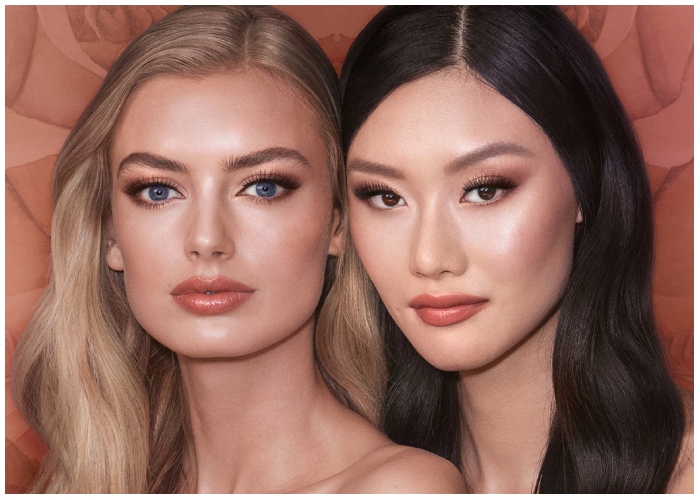The “clean girl” aesthetic was supposed to be a refreshing change. In a sea of contour-heavy makeup routines and maximalist glam, it promised something minimalist, healthy, and achievable: dewy skin, slicked-back hair, and a no-makeup makeup look. It offered the illusion of effortlessness and confidence, often framed as empowerment through simplicity. But now, in 2025, the cracks are starting to show. What once seemed liberating has become another unrealistic standard to chase. And for many, especially those with skin that doesn’t naturally fit the mold, the aesthetic feels more exclusionary than inspiring.
Skin Texture Was Left Out of the Picture
Scroll through any platform promoting clean girl looks and you’ll see skin that’s glowing—but also completely smooth, poreless, and without a hint of texture. This portrayal creates an implicit message: real skin isn’t good enough. The aesthetic hinges on natural beauty but quietly excludes the most natural aspects of human skin—pores, breakouts, scars, and fine lines. For many women, especially those with acne-prone or aging skin, it’s just another polished ideal to fall short of.
It’s “No-Makeup Makeup” That Still Requires Makeup
Ironically, achieving the clean girl glow still demands a suite of products—hydrating primers, skin tints, cream blushes, brow gels, lip oils, and highlighters. This isn’t about rolling out of bed and embracing your face as-is.

It’s a curated version of natural that still involves precision and cost. And that defeats the point. For something that claims to be low-maintenance, it sure asks for a lot of effort, money, and time.
Aesthetic, But Not Accessible
The clean girl aesthetic didn’t just celebrate minimalism—it subtly centered privilege. The influencers who popularized it often had the kind of clear, symmetrical features and naturally radiant skin that aligned perfectly with the look. Most were young, white or racially ambiguous, and conventionally attractive. For women with darker skin tones, hyperpigmentation, visible facial hair, or different facial structures, the “clean” standard didn’t always translate—or worse, suggested they needed to tone themselves down to fit in.
A Filtered Reality
Part of the problem is that most clean girl content is still heavily edited. Even as creators claim to embrace natural beauty, filters smooth out imperfections, lighting setups hide shadows, and post-processing eliminates blemishes. This isn’t about transparency—it’s about performance. And it creates a gap between what women think they should look like and what’s actually achievable. It turns skin care into a performance instead of care.
It Quietly Reinforced Gender Norms
While pitched as empowering, the clean girl look also leaned into traditional femininity: soft, polished, demure. It became another way to signal put-togetherness without being too bold, too wild, or too demanding. That’s not freedom—that’s compliance dressed up in aesthetics. The unspoken message was clear: be beautiful, but not intimidating; look great, but make it look easy.
Skincare as Aesthetic, Not Health
The rise of the clean girl coincided with the explosion of skincare culture. But instead of celebrating skin health, it commodified it. Glazed, luminous skin became the goal—not for the sake of comfort or care, but because it looked good on camera. This shift de-emphasized individuality in skin needs and overemphasized perfection. It taught people to treat skincare not as a relationship with their body, but as a tool for public approval.
The Problem with the Word “Clean”
Let’s talk about semantics. The very word “clean” is loaded. If dewy skin and tied-back hair are “clean,” then what’s everything else? Messy? Dirty? It’s not a neutral label—it’s a judgment. And whether intentional or not, it assigns moral value to a look. That kind of framing isn’t new in beauty, but it’s especially insidious when disguised as empowerment.
The Burnout of Perfection
Like every aesthetic that promises ease while secretly requiring perfection, the clean girl trend is beginning to show signs of fatigue. Women are tired of pretending that simplicity is the same as simplicity of effort. They’re exhausted by routines that are supposed to save time but only add to the checklist. And they’re pushing back against standards that, once again, leave them chasing an ideal that’s only real on camera.
A Shift Toward Skin Neutrality
Thankfully, there’s a new wave pushing back. Skin neutrality—the idea that skin should simply be, without needing to be flawless or aesthetically pleasing—is gaining traction. People are starting to share real skin: acne, scars, fine lines, and all. The movement recognizes that beauty shouldn’t be about hiding or fixing, but about accepting. And that’s far more radical than slick buns and lip gloss.
Where We Go from Here
The clean girl aesthetic may not vanish entirely, but it’s losing its halo. In its place, a more honest, inclusive, and raw beauty culture is taking hold—one that allows for messiness, for mood swings, for imperfect skin and imperfect lives. Because real beauty isn’t about looking effortless. It’s about giving yourself permission not to perform at all.